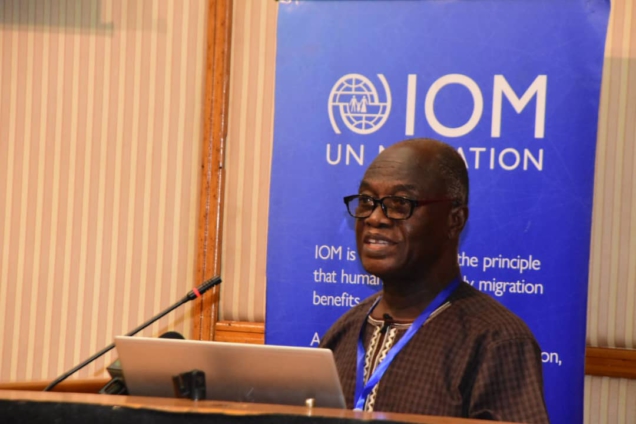About three in every four (76.2%) non-Ghanaians are working in three occupations only; namely, services and sales (34.0%), skilled agricultural, forestry and fishery (25.0%) and craft and related trades (17.2%).
According to the latest thematic report on Migration by the Ghana Statistical Service has revealed, these are easy-entry jobs which call for no skills or basic skills in order for one to go into them.
The majority of the working immigrants are self-employed without employees.
The highest proportion of non-Ghanaian population are from Nigeria, Togo, Niger and Burkina Faso
The migrants constituted 28.9% of the total population of 30,832,019 enumerated in the 2021 Population and Housing Census.
Majority (52.5%) of the migrants were females.
Speaking to Joy Business, Associate Professor of Population Studies at the Regional Institute for Population Studies at the University of Ghana, Professor John Anarfi said this is largely attributed to Ghanaians moving out of the country without skills in certain sectors.
He therefore entreated government to diversify the economy to have more Ghanaians acquire additional skills to accelerate the country’s economic growth.
“Ghanaians who are migrating are the main reason and those coming in are going to these areas. So as long as the situation continue, we will get people to occupy jobs which is not too good”, he said
The report further said the proportion of migrants in the population is much higher in rural areas (33.9%) than urban areas (22.2%).
More than a third (35.9%)of the migrants moved to settle permanently while 24.9% also moved due to marriage/family reunification.
Greater Accra received higher number of migrants
The Greater Accra Region received a higher number of migrants than all the other regions.
Six regions received more people than they sent out. All of them are in the south of the country.
The report furthered that there has been a slight decline in migration from 2010 – 2021. This may be as a result of the Covid-19 pandemic because most migrants had gone back to their hometowns and had not returned at the time the census was conducted.
There has been a decline in the non-Ghanaian population in the country between 2010 and 2021.
Latest Stories
-
I want to focus more on my education – Chidimma Adetshina quits pageantry
18 mins -
Priest replaced after Sabrina Carpenter shoots music video in his church
31 mins -
Duct-taped banana artwork sells for $6.2m in NYC
41 mins -
Arrest warrants issued for Netanyahu, Gallant and Hamas commander over alleged war crimes
44 mins -
Actors Jonathan Majors and Meagan Good are engaged
50 mins -
Expired rice saga: A ‘best before date’ can be extended – Food and Agriculture Engineer
58 mins -
Why I rejected Range Rover gift from a man – Tiwa Savage
59 mins -
KNUST Engineering College honours Telecel Ghana CEO at Alumni Excellence Awards
2 hours -
Postecoglou backs Bentancur appeal after ‘mistake’
2 hours -
#Manifesto debate: NDC to enact and pass National Climate Law – Prof Klutse
2 hours -
‘Everything a manager could wish for’ – Guardiola signs new deal
2 hours -
TEWU suspends strike after NLC directive, urges swift resolution of grievances
2 hours -
Netflix debuts Grain Media’s explosive film
3 hours -
‘Expired’ rice scandal: FDA is complicit; top officials must be fired – Ablakwa
3 hours -
#TheManifestoDebate: We’ll provide potable water, expand water distribution network – NDC
3 hours

